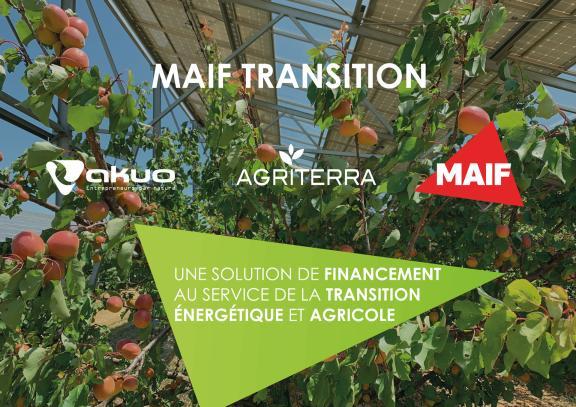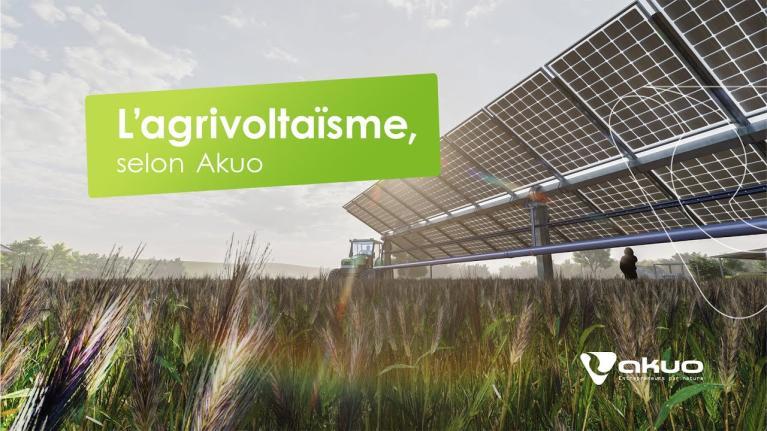Agrivoltaics: Innovation Serving Farmers
Agrivoltaic projects to create positive synergies between agricultural and energy production, while enabling energy independence.
Agrivoltaics, from concept to reality
Akuo launched its first project in agrivoltaics (initially called Agrinergy) in 2007 on the island of Reunion. Like many island territories, land use is primarily allocated to agricultural production to meet the food needs of local populations. What initially constituted a constraint for the installation of photovoltaic panels would ultimately become a vector of innovation: Akuo thought of coupling agricultural and solar production on the same land by creating positive synergies for both. A new model was born!
The first plant based on this model to emerge on the island was that of Pierrefonds, inaugurated in 2010. Since then, more than 20 projects of this type have emerged within the Akuo Group, in Réunion, New Caledonia and continental France, with a total installed capacity of more than 150 MWp.

Making agriculture climate-resilient
Climate change is subjecting agriculture to strong pressures: degraded soils, droughts, hailstorms, etc., all of which jeopardize farmers' ability to feed societies. Akuo's new agrivoltaic practices make it possible to address each of these new phenomena and thus reduce the risks of yield loss.

Agrivoltaics: combining the agricultural and energy transitions
Over 20
Agrivoltaic projects under construction and in operation around the world
Over 150
MWSolar capacity (2022)
Enabling a sustainable agricultural transition
The agrivoltaics model promoted by Akuo preserves the agricultural yields of the plot, while creating additional value related to energy production. In addition to optimizing the space generated, the financial flows generated by the marketing of electricity make it possible to support and diversify the agricultural activity carried out on the site. And, in some cases, to make it competitive, to facilitate the transition to a sustainable and agroecological production model, or to give an economic boost to the farm by creating local jobs

Agrivoltaics according to Akuo
Farmers at the center of the project
By putting farmers at the heart of the project and by offering training and support throughout the partnership, Akuo guarantees that farmers will keep control of their production while being financially supported, so that they can invest and absorb climate variations and the volatility of agricultural production prices. This is a fair return for the agricultural world.

Continuous innovation
Since its invention, Akuo has constantly developed the concept of agrivoltaics in order to offer ever more efficient and sustainable solutions. First-generation agrivoltaics combines agriculture and green electricity production via photovoltaic plants on the ground. Crops are interspersed between rows of solar panels. The second generation is based on the superposition of agricultural and solar production, by setting up anticyclonic photovoltaic greenhouses. The third generation combines an electricity storage system with the power plant, allowing optimal use of all the energy produced.

Facilitating the transition to agroecology
Each project is designed in a global and sustainable way. Value creation is oriented towards the agricultural transition by implementing resilient and, if possible, organic and water-efficient practices. By promoting the complementarity of species, the soil remains cultivable and is continuously enriched.

Water management
Photovoltaic structures significantly reduce water consumption by limiting the evapotranspiration phenomenon. Designed to save this resource, some photovoltaic structures can also collect rainwater, direct it to a dedicated water storage infrastructure, and then redistribute it to crops in an optimized way via drip or micro-sprinkler systems, depending on the crop.

An array of technologies
Reconciling agriculture and electricity production must not create constraints for either of the activities. It is therefore necessary to identify which technology will best adapt to ensure that agricultural and energy production are mutually strengthened. To do this, each photovoltaic system is designed to benefit both productions. More than just photovoltaic panels, some power plants are real production tools that adapt to climate conditions in real time.

Generate citizen engagement
Agrivoltaics is a great opportunity to create strong links with the host territory: training, local job creation, sustainable and local food production are all rhizomes that benefit the community.

Agrinergie: important dates

2007

2009

2014

2016

2019
MAIF Transition
Financing solution for the agricultural and energy transition
Created in 2019 by the MAIF insurance company and MAIF Transition is a financing solution designed for dozens of agricultural and renewable energy projects across France. The solution meets the needs of project initiators:
- Land ownership loans : make it easier to buy farm land by acquiring land and making it available through 25-year rural environmental leases.
- Installation or diversification : undertake the necessary investments for installation or diversification projects (irrigation, agroecology to reverse soil degradation, etc.)
- Agrivoltaics : examine the possible implementation of an agrivoltaic project along with an agricultural project on part of the land.

-
What is agrivoltaics?
-
Since 2023, Article 54 of the APER law, followed by the various decrees on agriPV, has set out a framework and definition for the development of agrivoltaics in France.
From then on, an installation is said to be ‘agrivoltaic’ when it guarantees the farmer significant production and a sustainable income, while respecting a regulated rate of coverage of the panels on the plot. The project must also provide at least one of the following services: improving agronomic potential and impact, adapting to climate change, protecting against climatic hazards or improving animal welfare.
-
Why should you consider agrivoltaics?
-
There are many advantages to agrivoltaism: diminution of water requirements thanks to reduced evapotranspiration and water stress, reduced soil temperature thanks to the shade generated, protection of the farm against climatic hazards, improved animal welfare by protecting animals from heat and certain predators, benefiting from investments to support your farming projects, diversification of income by generating a stable additional income over 30 years.
-
What technologies should be used?
-
There are many different technological solutions to choose from, depending on the needs of the farmer, the crops grown and the specific operating conditions at the site.
Trackers are recommended for arable crops, livestock (cattle, sheep, pigs, etc.), arboriculture and viticulture.
Agrivoltaics shading systems are mainly used for arboriculture and viticulture.
Ground-mounted structures are appropriate for livestock projects (cattle, sheep, pigs, etc.), market gardening, small fruit and perfume, aromatic and medicinal plants.
-
How long does an agrivoltaic project last?
-
An agrivoltaic project is divided into several phases, each with a different duration.
Co-construction of the agricultural project with the farmer and its development, until planning permission is obtained, will take around 2 years. Then comes the financing, structuring and construction phase, which can take around 18 months. Once the structure has been finalised, the operating phase can begin and will be operational for a period of 30-50 years.
Throughout the project, the farmer remains at the heart of the decision-making process, working hand in hand to build the structure that best meets his needs and requirements. Our teams are also present throughout the life cycle of the farm to ensure that the photovoltaic and agricultural components work together smoothly.

